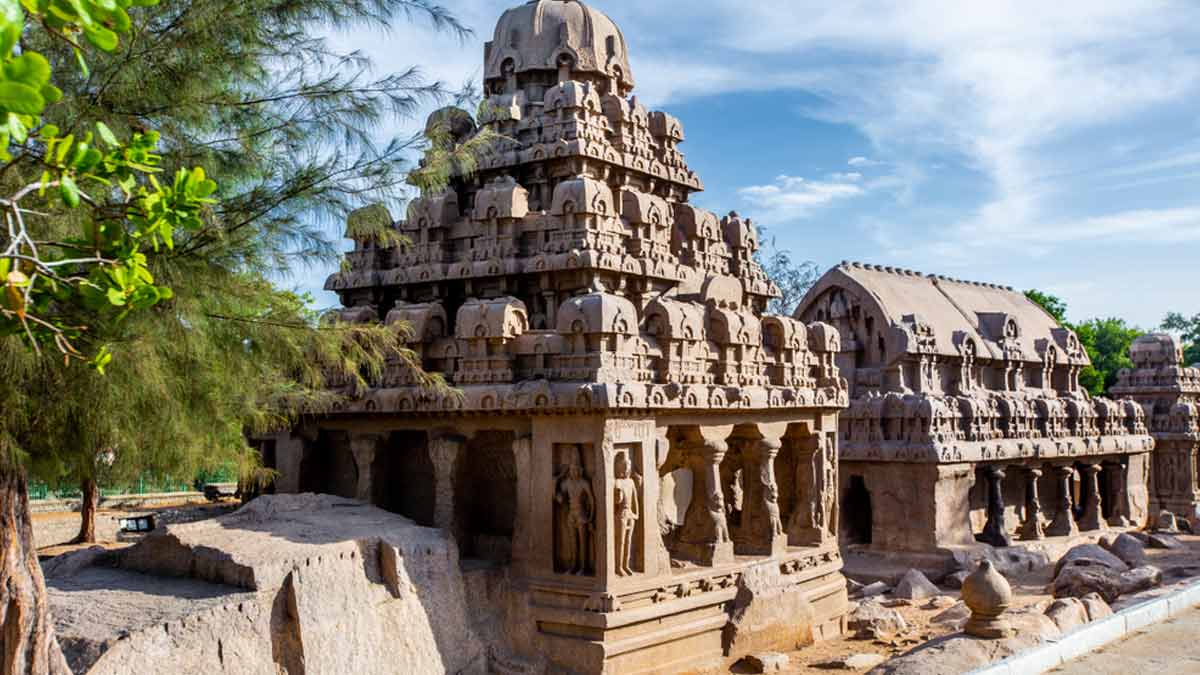
South India is a treasure trove of cultural and historical heritage, and several of its sites have been recognised as UNESCO World Heritage Sites. A World Heritage Site is an area, landmark, site, or structure, natural or man-made that is acknowledged by UNESCO as having significant cultural, historical, or scientific value and, as such, requires special international protection.
These sites are a testament to the rich history and traditions of South India and attract tourists from all over the world. They offer insights into the past and serve as a reminder of the region's glorious past. Here are some of the UNESCO World Heritage Sites in South India:

Image credit: UNESCO World Heritage Centre
Hampi, a popular UNESCO World Heritage Site in Karnataka, was once the capital of the powerful Vijayanagara Empire. Now in ruins, Hampi is a captivating blend of temples, palaces, fortifications, and other structures that stand as testaments to a bygone era. The captivating beauty and historical significance of this place makes it a must-visit destination.
Located on the Coromandel Coast in Tamil Nadu, Mahabalipuram is a UNESCO World Heritage Site renowned for its exquisite sculptures and intricate temples. The Shore Temple, with its towering granite structures, is a masterpiece of Pallava architecture. Other notable attractions include the Five Rathas, a group of monolithic rock temples, and Pancha Pandava Cave. About forty ancient monuments and temples said to have been constructed during the 7th and 8th centuries could be seen in Mahabalipuram. They showcase the craftsmanship of the Pallava Dynasty.

Image credit: Wikipedia
Pattadakal, a UNESCO World Heritage Site in Karnataka, is a haven for history and architecture enthusiasts. This ancient town was the royal capital of the Chalukya dynasty and boasts a remarkable collection of temples, showcasing the evolution of Chalukyan architectural styles. The Virupaksha Temple, with its towering gopurams and intricate carvings, is particularly noteworthy. It is home to nine Hindu temples and a Jain sanctuary. (as per UNESCO World Heritage Centre)

Image credit: UNESCO World Heritage Centre
The Sacred Ensembles of the Hoysalas, a UNESCO World Heritage Site in Karnataka, are a testament to the architectural prowess of the Hoysala-style temple complexes. These three temples, Chennakesava Temple at Belur, Hoysaleswara Temple at Halebid, and Kesav temple at Somnathpur in Mysore are renowned for their intricate carvings, star-shaped plans, and exquisite sculptures.
Don't miss: Famous Religious Temples Of South India
The Great Living Chola Temples, a UNESCO World Heritage Site in Tamil Nadu, comprise three magnificent temples: the Brihadeeswarar Temple at Thanjavur, the Brihadisvara Temple at Gangaikondacholisvaram and the Airavatesvara Temple at Darasuram. These temples, built by the Chola dynasty, are architectural marvels, showcasing the grandeur and artistry of Chola architecture. (as per UNESCO World Heritage Centre)
Don't miss: Hill Stations In South India

Image credit: UNESCO World Heritage Centre
The most stunning part of South India is the Western Ghats, an incredible natural treasure. The Western Ghats, a UNESCO World Heritage Site, are a mountain range stretching along the western coast of India, covering parts of Karnataka, Kerala, and Tamil Nadu. This biodiverse region is home to a rich variety of flora and fauna, including endangered species. The Western Ghats' stunning landscapes, including waterfalls, rainforests, and hill stations, make them a popular tourist destination.
For more such stories, stay tuned to HerZindagi.
Also watch this video
Herzindagi video
Our aim is to provide accurate, safe and expert verified information through our articles and social media handles. The remedies, advice and tips mentioned here are for general information only. Please consult your expert before trying any kind of health, beauty, life hacks or astrology related tips. For any feedback or complaint, contact us at compliant_gro@jagrannewmedia.com.